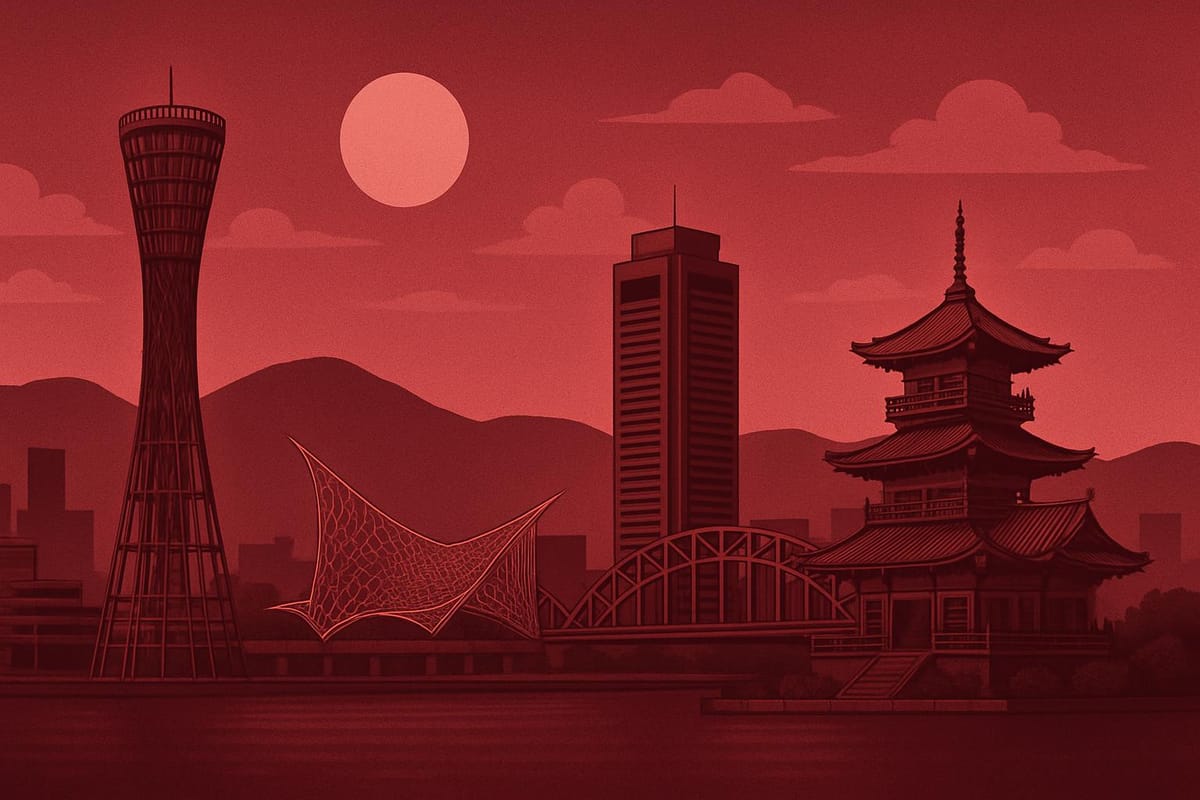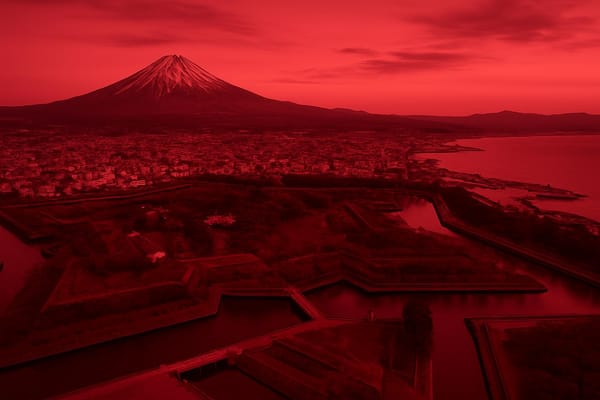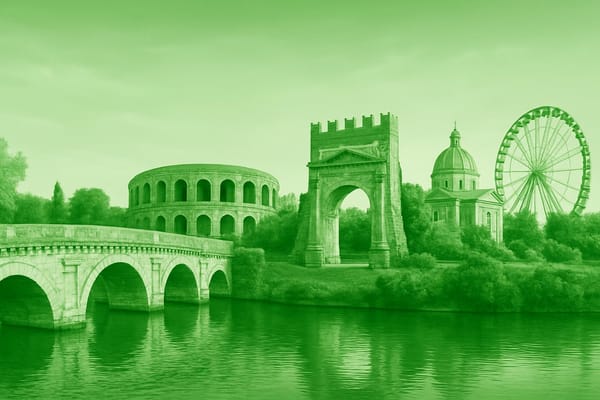Kobe
Harbor night views, world-class wagyu, hot springs & mountain panoramas - discover urban charm

Important things to know about Kobe
Kobe, Japan, is a vibrant port city in Hyōgo Prefecture that blends a sleek urban skyline with dramatic mountain slopes and a long-standing tradition of international exchange, giving it a unique identity among Japanese municipalities; historically shaped by maritime trade and foreign settlement, Kobe developed as an early gateway between Japan and the world, cultivating a multicultural atmosphere reflected in its neighborhoods, culinary scene, and business networks. The city's economy balances shipping, logistics, and manufacturing with growing sectors in services, research, and creative industries, while local universities and innovation centers feed a skilled workforce that supports both global commerce and regional development. Urban planning in Kobe emphasizes resilient infrastructure and green spaces integrated into a compact urban fabric, and the memory of the 1995 Great Hanshin Earthquake remains a defining chapter in civic life, inspiring advanced disaster preparedness, community-oriented recovery programs, and a strong civic pride in resilience. Transportation connectivity is a core strength - efficient rail, highway, and port links facilitate commuter flows and international trade, underpinning Kobe’s role as an economic hub. Cultural life is quietly cosmopolitan: arts, design, and food culture intersect with daily life, and the city’s reputation for refined culinary products like Kobe beef complements a broader emphasis on craftsmanship and quality in local commerce. With a temperate climate moderated by maritime influences, a diverse demographic profile, and ongoing investment in sustainable urban initiatives, Kobe presents a modern, adaptable urban center that balances historical depth with forward-looking economic and social strategies.
Sightseeing hot-spots in Kobe
Kobe is a vibrant port city in Japan that combines urban sophistication with seaside charm, making it a top choice for sightseeing and short trips from Osaka. Strolling along Kobe Harborland and Meriken Park you’ll encounter the iconic Kobe Port Tower, waterfront promenades and contemporary art installations. As day fades, the illuminated skyline and the gentle reflections on the bay create one of the city's most famous attractions: the dazzling night view often ranked among Japan’s best. Food lovers will seek out authentic Kobe beef, a culinary highlight that pairs perfectly with the cosmopolitan dining scene around Sannomiya and Motomachi.
Beyond the waterfront, nature and panoramic vistas await on Mount Rokko, accessible by cable car and winding roads that reveal sweeping views over the city and Osaka Bay. Nearby, the serene Nunobiki Falls and the lush botanical gardens offer refreshing trails and photo opportunities for travelers seeking a green escape. The Rokko area also hosts scenic observatories, seasonal flower displays and outdoor activities that make it a year-round destination for both hikers and families looking for relaxed Kobe sightseeing options.
Cultural diversity is unmistakable in neighborhoods like Nankinmachi, Kobe’s lively Chinatown where colorful stalls and traditional flavors create an energetic atmosphere, and Kitano-cho, with preserved foreign residences that tell the story of Kobe’s international past. Museums, boutique shops, and hip cafés fill the streets, while festivals and harbor cruises add local flavor to any itinerary. For anyone planning a trip to Kobe, Japan, these attractions - from culinary delights to mountain vistas and historic quarters - combine to form a memorable travel experience packed with must-see Kobe attractions.
Hotels to enjoy in Kobe
Kobe is a city where modern style meets historic charm, and choosing the right hotels in Kobe, Japan can turn a simple stay into a memorable experience. From the bustling Sannomiya district with convenient transport links to the scenic Harborland area offering stunning harbor views, accommodations range from sleek business hotels to boutique properties that celebrate local culture. Travelers seeking a taste of the region should look for hotels near popular attractions like Kitano and the Meriken Park waterfront, where many properties offer rooms with panoramic vistas and easy access to dining spots serving the famous Kobe beef. For those wanting relaxation, there are also traditional ryokan and spa hotels close to Arima Onsen, blending modern comfort with a chance to soak in mineral-rich baths. Good SEO-focused searches will include terms like "luxury hotels in Kobe," "budget hotels in Kobe," or "Kobe hotel with harbor view" to quickly surface options tailored to different trip styles.
When planning a stay, consider the purpose of your visit - whether it's a family getaway, culinary tour, or business trip - and filter hotels by amenities such as free Wi-Fi, on-site dining, conference facilities, or onsen access to match your needs. Many hotels in Kobe offer multilingual services and easy shuttle or subway connections, making them convenient bases for exploring nearby Osaka and Kyoto as well. Booking ahead during festival seasons or major events is recommended to secure the best rates and room types, while reading recent guest reviews helps verify cleanliness, service quality, and real guest experiences. Incorporating key phrases like "hotels in Kobe Japan," "Kobe accommodation," and "where to stay in Kobe" in your searches will improve results and help you find the perfect property for an unforgettable stay in this vibrant port city.
Restaurants to try in Kobe
Kobe's dining scene is a rich tapestry where tradition meets innovation, and the city's Kobe restaurants are celebrated for both luxurious tasting menus and cozy neighborhood eateries. Travelers seeking the legendary Kobe beef will find a range of experiences from intimate teppanyaki counters to refined dining rooms that showcase melt-in-your-mouth wagyu prepared with precise technique. Beyond steak, culinary explorers can enjoy exceptional sushi, fresh seafood from the nearby port, and creative fusion plates that reflect Kobe's international history. Areas like Sannomiya and Motomachi offer bustling streets lined with izakayas and bakeries, while the waterfront of Kobe Harborland provides scenic dinners with harbor views. Whether you're hunting for Michelin-starred tasting courses or late-night local favorites, the diversity among restaurants in Kobe ensures memorable meals for every budget and palate.
For those focused on authentic local flavors, small family-run restaurants and market stalls around Nankinmachi and the port bring forward recipes passed down through generations, emphasizing seasonal ingredients and precise preparation. The city also supports a growing number of contemporary cafés and wine bars that pair international techniques with Japanese sensitivity to ingredient seasons. When planning dining in Kobe, consider mixing traditional Kobe beef experiences with sushi counters and a visit to a lively izakaya to fully appreciate the region’s culinary identity. With its blend of luxury, maritime freshness, and neighborhood charm, Kobe remains a top destination for food lovers seeking both iconic specialties and inventive new dining trends.
Best shopping stops in Kobe
Kobe offers an irresistible mix of Kobe shopping experiences that blend international luxury with intimate local flavor. Around Sannomiya you’ll find stylish department stores and sleek boutiques where luxury brands sit beside emerging Japanese designers, making the area a hotspot for lovers of Kobe fashion. The historic Motomachi Shopping Street delivers a charming arcade of independent shops, confectioneries and specialty stores that are perfect for picking up unique souvenirs and artisan goods. For waterfront ambiance, Kobe Harborland features modern malls, riverside promenades and eye-catching shops where visitors can enjoy combined sightseeing and retail therapy. Food-focused shoppers will find the city’s culinary identity irresistible: sample and buy local specialties like packaged Kobe beef preparations, gourmet chocolates, and delicate wagashi from premium confectioners.
Exploring shopping in Kobe, Japan also means discovering pockets of culture such as Nankinmachi (Kobe Chinatown) with its vibrant stalls and culinary treats, and the Kitano area where crafts and antiques reflect the city’s cosmopolitan past. Department stores like Daimaru and Sogo offer reliable selections and seasonally curated goods, while designer outlets on the outskirts present discount opportunities for brand-conscious visitors. Whether you’re hunting for high-end fashion, handmade ceramics, sake sets, or edible gifts to bring home, Kobe provides diverse retail landscapes that cater to every interest and budget, making it an essential destination for shoppers touring Japan.
Nightlife highlights in Kobe
Kobe’s nightlife blends elegant harbor scenery with lively urban energy, making Kobe Harborland and the waterfront a must-see after sundown. Stroll along the promenade to catch the famous night view reflected on the water, or board an evening cruise for panoramic city lights that highlight the bay and the iconic Meriken Park. Food lovers will find late-night indulgences in intimate restaurants serving Kobe beef, from teppanyaki counters to cozy modern bistros, while rooftop bars and stylish cocktail lounges offer a refined backdrop for drinks. The combination of seaside breezes, illuminated bridges, and chic dining spots creates a memorable atmosphere that defines contemporary Kobe nightlife.
For those seeking a more eclectic scene, the Sannomiya area pulses with karaoke, live music venues, and bustling izakaya streets where locals and visitors mingle until late. Wander into the neon-lit Nankin-machi to sample street food and specialty eats, or discover underground jazz clubs and craft beer pubs that showcase Kobe’s diverse tastes. Many bars and clubs promote a welcoming, low-key vibe, and a night ride up Mount Rokko provides one of the city’s best vantage points for a sweeping night panorama. Whether you prefer glamorous lounges, traditional drinking spots, or scenic harbor views, Kobe nightlife offers variety, safety, and unforgettable urban charm.
Getting around in Kobe
Kobe's airport and train situation is user-friendly and well-integrated, making travel in the Kansai region convenient for both tourists and business travelers: Kobe Airport (UKB) sits on Port Island and is primarily a domestic hub, linked to the city center by the automated Port Liner, a quick ride to Sannomiya in about 18 minutes that offers seamless transfers to city subways and private railways; for long-distance travel, Shin-Kobe station on the Sanyo Shinkansen gives high-speed connections to Osaka, Kyoto, and Hiroshima, while frequent local services run on JR West, Hankyu, Hanshin, and Sanyo lines serving Sannomiya as the principal transit node, so passengers can easily reach attractions, business districts, or hotel areas. International travelers often use Kansai International Airport as the main gateway, reachable from Kobe by direct airport limousine buses or a combination of local trains and express services in roughly an hour, and the city's transport accepts IC cards like ICOCA/Suica for effortless transfers; overall, Kobe offers a compact, efficient mix of airport access and rail connectivity that supports fast, predictable journeys across the Kansai region.
Culture must-see's in Kobe
Kobe is a vibrant city where Kobe culture blends historic tradition with modern international flair, offering travelers unforgettable Kobe attractions and culinary experiences. Strolling through Kitano-cho with its preserved foreign residences and then down to the neon glow of Harborland shows the city’s dual personality, while the solemn beauty of Ikuta Shrine and the green serenity of Nunobiki Falls reveal its spiritual and natural roots. Food lovers know Kobe for Kobe beef, a world-renowned delicacy, but the city's sake breweries in Nada and the lively stalls of Nankin-machi (Chinatown) also showcase a rich gastronomic heritage. Cultural calendars bring the city to life: the luminous Kobe Luminarie memorial lights, traditional festivals, and contemporary music and art events all highlight the evolving cultural scene of this international port city.
Exploring the cultural highlights of Kobe means appreciating how history, art, and daily life intersect; local museums and galleries interpret the earthquake resilience and international trade history that shaped the city, while boutique shops and trendy cafes demonstrate its modern creative energy. Outdoor activities on Mount Rokko and evening cruises past the iconic Kobe Port Tower combine scenic views with cultural storytelling, making sightseeing one of the best ways to understand Kobe’s heritage. Whether you seek food-focused travel, temple visits, festival atmospheres, or design-forward neighborhoods, Kobe offers diverse cultural experiences that appeal to foodies, history buffs, and urban explorers alike, ensuring memorable moments and rich stories to share from your Kobe travel itinerary.
History of Kobe
Kobe’s story as a vibrant hub in Japan begins long before modern maps labeled it a cosmopolitan port city. Nestled between the Seto Inland Sea and the Rokko mountains, Kobe has roots in ancient trade and coastal communities that gradually grew through the Nara and Heian periods. Its geography made it a natural gateway for goods passing between the Kansai interior and the sea, but it was the opening of Japan during the Meiji era that transformed the history of Kobe into an international narrative. In 1868, the port officially opened to foreign trade, creating a distinctive foreign settlement where Western architecture, businesses, and cultural exchange flourished alongside traditional Japanese neighborhoods. This fusion accelerated industrialization, led to the development of shipyards, banking, and transportation infrastructure, and positioned Kobe as one of Japan’s leading maritime and commercial centers. The city’s identity also became known worldwide through culinary fame: Kobe beef emerged as a luxury product tied to regional agriculture and refined dining, attracting travelers and gourmands to experience the city’s unique food culture.
The modern chapter of Kobe Japan is marked by resilience and reinvention, notably after the devastating Great Hanshin earthquake of 1995. The quake caused immense loss and damage, but it also catalyzed a nationwide conversation on disaster preparedness and urban planning. Through rapid reconstruction, community-led initiatives, and significant infrastructure investment, Kobe rebuilt its port facilities, revitalized waterfront districts like Harborland and Meriken Park, and reinforced transportation links that restored its role in international shipping and tourism. Today Kobe blends historical neighborhoods and contemporary developments with cultural institutions, museums, and festivals that celebrate its maritime heritage and multicultural past. Visitors find scenic views from Mount Rokko, culinary delights including the famous Kobe beef, and reminders of the city’s resilient spirit. The ongoing story of Kobe remains a compelling case study in urban adaptation, economic diversification, and cultural hybridity-making the history of Kobe an essential chapter in understanding Japan’s modernization and the enduring importance of global port cities.



